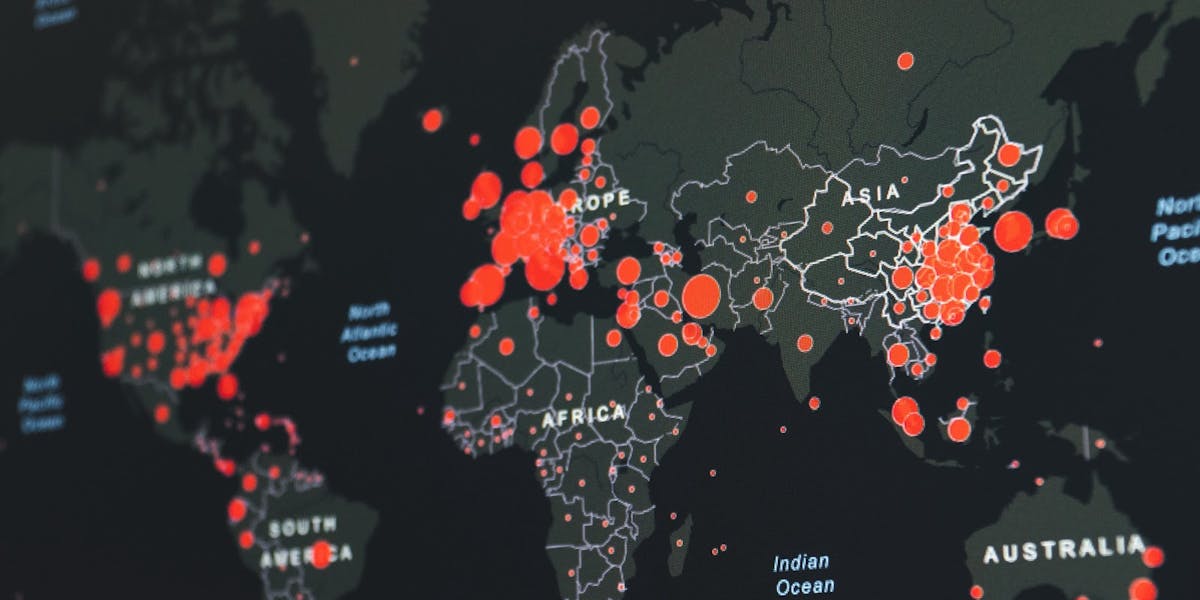
Author
Akshaya Raj
Akshaya Raj is pursuing her Bachelors in Computer science Engineering. She writes articles related to technology and social issues with a hope to bring a change. She writes blogs occasionally.

The dawn of 2020 has brought an invisible yet fast-spreading threat to humankind, the COVID-19 pandemic. Human civilization has come across several epidemics at various points in history and some of them even wiped out millions of lives. The reason for the majority of these deaths was the lack of proper awareness about the disease itself. Fortunately, this time around, thanks to the social media, we are availed with instant updates and precaution measures at our disposal. However, this relentless flood of information leads to confusions and often we find ourselves struggling to distinguish the boundary between fact and fiction. This has resulted in the development of the chaotic times we are in now.
The novel strain that is expected to have caused COVID-19 in Wuhan was first documented by the Chinese medical officials on December 31, 2019. Subsequently, it was named as SARS-CoV-2. It belongs to a large family called Coronaviruses. Viruses belonging to this family are not new, they’ve been successfully existing on the Earth from 10,000 years ago and were invading and infecting wild animals. Notably, this isn’t the first encounter of a virus from the Corona family infecting human population. The causative agents of the outbreak of Severe Acute Respiratory Syndrome (SARS) in 2003 that emerged in China and the outbreak of Middle East Respiratory Syndrome (MERS) in 2012 in Saudi Arabia were also members of the same virus family. Though they all come from the same family, there are certain differences in the rate at which they infect and spread and this is the reason for the prevailing chaos. The analysis of public genome sequence data from the available strains of SARS-CoV-2 has proved that the virus was not genetically engineered in laboratories. In the middle of January 2020, the Chinese authorities made the genome sequence of the virus available to the scientists worldwide. With the available Genome data, Kristian Anderson, an associate professor of immunology and microbiology at Scripps Research Centre, has evidentially proved that the SARS-CoV-2 Coronavirus evolved as a result of Natural Selection. This research postulated that the overall molecular structure and the backbone of the COVID-19 virus is different from that of the other known Coronaviruses and they resemble the viruses found in bats and pangolins. All these results have put a significant end to the rumours circulating in social media linking the pandemic to biological warfare.
Though the disease emerged in China, it has now become a worldwide pandemic as it has infected people of 203 countries as of today. In India, the number of infected and deceased is climbing up exponentially. As per statistics, if the situation continues to be the same, the virus seems powerful enough to infect 60 per cent of the world population. Novel coronavirus is dreadfully contagious compared to the viruses that cause diseases like influenza. The reason behind this is the prolonged incubation period (interval between the injection of virus and onset of the symptoms) for COVID 19 which stands at an average of 5 to 14 days. Hence, controlling the spread of SARS-CoV-2 virus is harder. Again, since the virus is relatively stable i.e. it retains its pathogenic state for a long time even on inorganic surfaces, the chances of contracting the virus from non-living entities also exist. The virus can remain stable on aerosol surfaces for 3 hours, on cardboard for 24 hours, on copper for 4 hours and on plastics and stainless steel for 2 to 3 days. Thus, a specialised genomic sequence found in this has rendered it virulent on various kinds of fomites.
In human beings, over the incubation period of this virus, the most expected symptoms include fever, cough, shortness of breath or difficulty in breathing, tiredness, aches, running nose, sore throat, etc. Older people and those with pre-existing illness such as asthma, heart diseases are more vulnerable to the virus and the illness is considered lethal for people above the age of 60 and those with respiratory illnesses. Children who are infected show less severe symptoms develop acute respiratory and gastrointestinal symptoms and generally recover in 2 to 3 weeks, thanks to immunity and their lung cells. The official journal of the European Society for Paediatric Infectious Diseases says that fewer symptoms does not mean that children are not at all prone to the disease and warns that this misunderstanding may lead to undiagnosed cases. As per the available data, 90% of the infected children got recovered without any special medical treatments.
Overall, around the world, the pandemic has killed almost 70,000 and the toll of affected casualties has exceeded 12 lakhs. The reason behind this huge number of infected cases and death is the lack of specific antiviral medications available for the disease that targets the interactions between the virus and the human or animal cell. Hence prevention of the disease is the first and the only defence we have.
The best way to prevent oneself is to practice good hygiene. Following the precautionary measures listed below will help in prevention of the disease to a huge extent:
Apart from the preventive measures taken by the individuals, the Government has also taken various measures to prevent and control the disease. The Government of India announced the suspension of International Flight Operations on March 19 followed by suspension of Domestic operations on March 24. Our Prime Minister, Narendra Modi requested the citizens to follow a 14-hour voluntary curfew on March 22. This was followed by a nationwide total lockdown for 21 days which came into force on March 25 and is set to be in effect till April 14. As even countries with much-advanced healthcare system than ours such as the US, UK, Spain, Italy etc. are stumbling to accommodate and treat infected patients, this lockdown arguably seems obligatory for a country like India considering the large population.

Image of a cinema screen locked due to the Lockdown norms
Whatever be the preventive measures taken by the official bodies, the attitude of the individuals who are expected to follow the measures matter much in times of such crisis. Even the canons and submarines of the great world war didn’t leave such an impact on these many countries as Coronavirus has done. Around the world, police officials, doctors and sanitation workers are working 24x7 for the welfare of the people. People from different countries are coming forward to express their solidarity through online platforms. This shows that human values always stand before the technologies and achievements. Perhaps nature was fed up with all the fighting we did amongst ourselves. In this time, it will be atrocious for us to remain selfish worrying about our safety and welfare. This is the time to act wisely, as our actions are directly tied to the lives of thousands of lives. For once, let us break the chain and remain united and win this battle against the common enemy.
DISCLAIMER: The opinions or views expressed are views of the individual writers and not of the institution. All forms of content published in this website and Student Journalist Council - GCT's social media handles are strictly properties of Student Journalist Council - GCT and are works of the various teams of the respective academic years.
No article, story or any form of content produced by Student Journalist Council - GCT is meant to be reproduced or distributed, either in parts or whole, without prior permission from Student Journalist Council - GCT for any purposes.